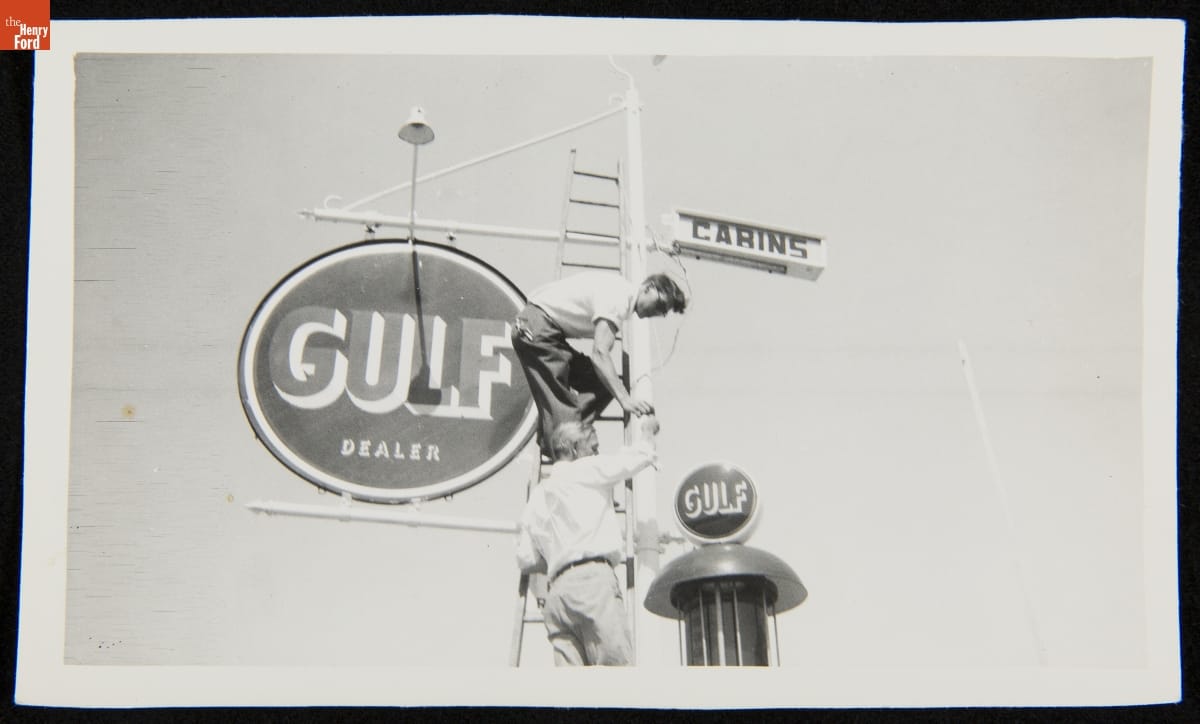Your Home Away from Home

By the 1930s, many motorists had grown weary of camping out. Turned out it wasn’t much fun cooking meals, sleeping in crude tents, and roughing it with primitive equipment and few amenities. Homey little cabins like this one, which were increasing in number at the time, seemed much more appealing. Often home-built by the property owners with a little elbow grease and a can-do attitude, these offered privacy, a modicum of comfort, and a needed respite on the journey from home to one’s final destination.

This tourist cabin, now in the “Driving America” exhibition in Henry Ford Museum of American Innovation, was once part of a group of cabins clustered together along U.S. Route 12 in Michigan’s picturesque Irish Hills region. Originally called the Lore Mac Cabins, this modest cabin complex was built between 1935 and 1938. Today this cabin looks much as it did back then, with many of its original fixtures and furnishings.

Come now on a tour of the Lore Mac Cabins, as a series of snapshots and personal reminiscences give us a glimpse of what the place was like back in the 1940s.

The cabins were arranged in a semi-circle along a dirt road. Common bathroom facilities were located behind the main office and the owner’s residence (visible in the foreground of this snapshot). Men’s and women’s shower facilities were located here as well.

The owner of the Lore Mac Cabins was also an approved Gulf gasoline dealer. Two gasoline pumps out in front beckoned both overnight guests and other motorists needing to fill up while driving along busy Route 12 between Detroit and Chicago.
The cabin proprietors lived behind the office in which lodgers registered for their nightly stay. Here the daughter of the owner (and donor of the snapshot) poses self-consciously on the back porch of their residence.
The heat for the “heated cabins”--as advertised in large letters emblazoned across the main building--was provided by small, pot-bellied stoves in each cabin, fueled with wood or coal. The Gulf gasoline sign is visible out front.

In the early 1940s, the owner charged around $2.50 for a single cabin and four to five dollars for a double cabin. The interior walls of the cabins were lined with an inexpensive beaver board material while linoleum covered the floor. Throw rugs alongside the metal-frame beds added a touch of hominess. Guests not wanting to trek all the way to the central sanitation facility could use a white enamelware commode discreetly placed under the bed.

The chairs scattered about the property became a perfect place to pose for snapshots. Taking pictures provided a concrete reminder of a trip and might serve as free advertising for the proprietor when guests shared their adventures with family and friends back home.
Alas, competition eventually made it impossible for small Mom-and-Pop operations like the Lore Mac Cabins to survive. Travelers began to bypass tourist cabins like these for the improved amenities of motels, motor inns and, by the 1950s, standardized chains like Holiday Inn.

Cabins like those at the Lore Mac were certainly preferable to camping. But, despite the attempts by tourist cabin proprietors to offer “homes away from home” at a modest price and in an informal atmosphere, the days of these early bare-bones roadside lodgings were numbered.

Donna R. Braden is Curator of Public Life at The Henry Ford.
travel, Driving America, Henry Ford Museum, Michigan, roads and road trips, by Donna R. Braden, hotels


Facebook Comments